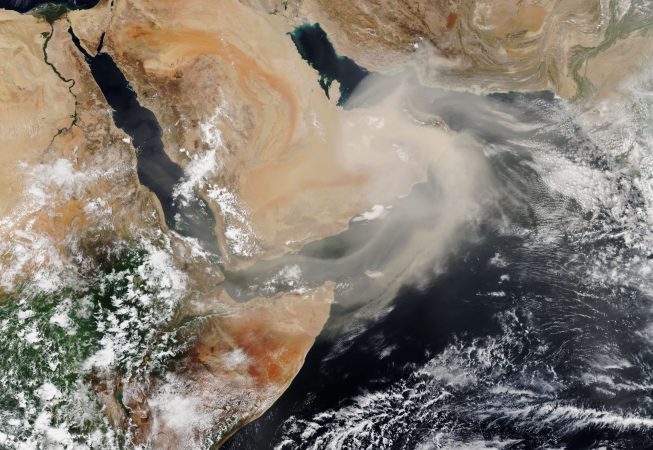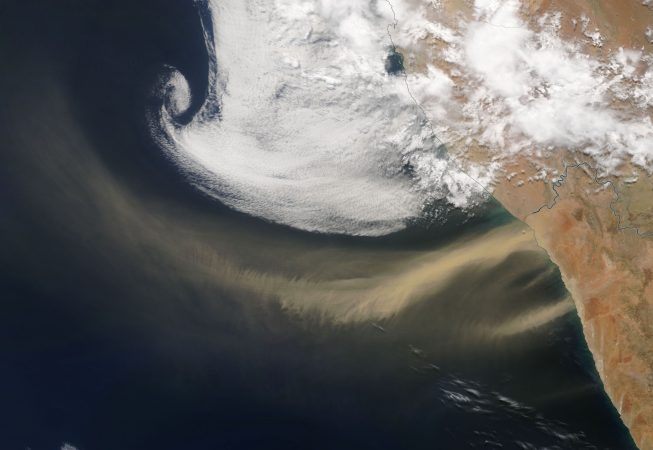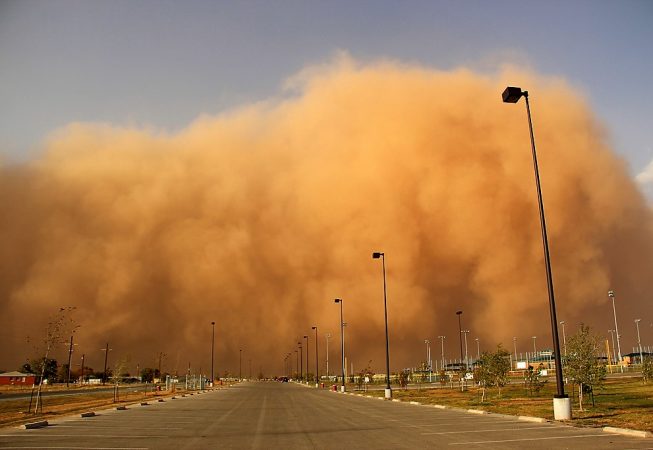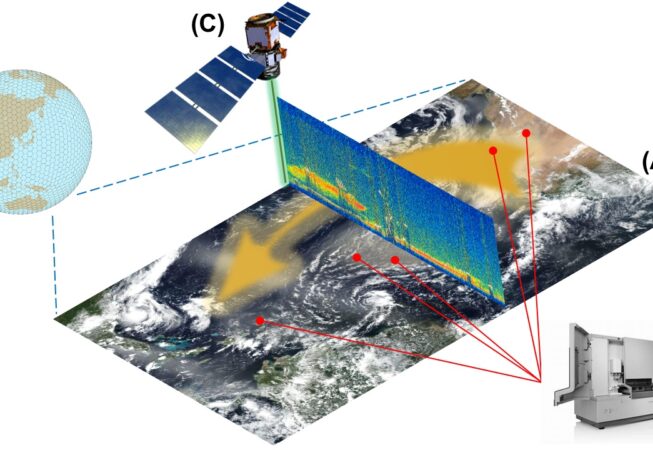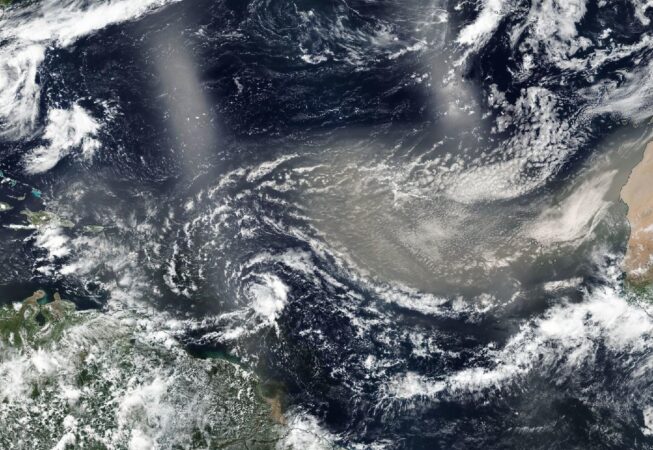Windblown dust, emitted from surface of the Earth to the atmosphere, has significant impacts on atmospheric phenomena, air quality, and human health. It alters radiation, cloud properties, precipitation, and atmospheric visibility, and contributes to long-range transport of organic chemicals, microbial species, and trace metals.
Dust plumes play an important role in long-range transport of microorganisms including bacteria, fungi, archaea, and viruses. Using an interdisciplinary approach, we integrate multiplatform satellite and ground observations, as well as multiscale reanalysis and atmospheric simulation data with microbiological tools to bridge dust aerosols transport and microbial biodiversity in the atmosphere. Read a story about our NASA-funded project on microbial biodiversity of trans-Atlantic dust plumes:
A trans-Atlantic journey: how microbes and dust travel from Africa to the Americas
We also develop physics-based models to better predict atmospheric dust emissions and transport across a wide range of scales. Our dust scheme is implemented in CMAQ modeling system of the US EPA and is publicly available.
